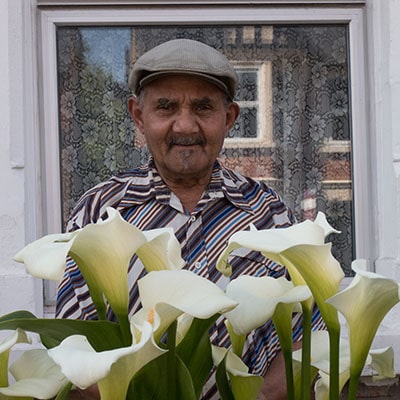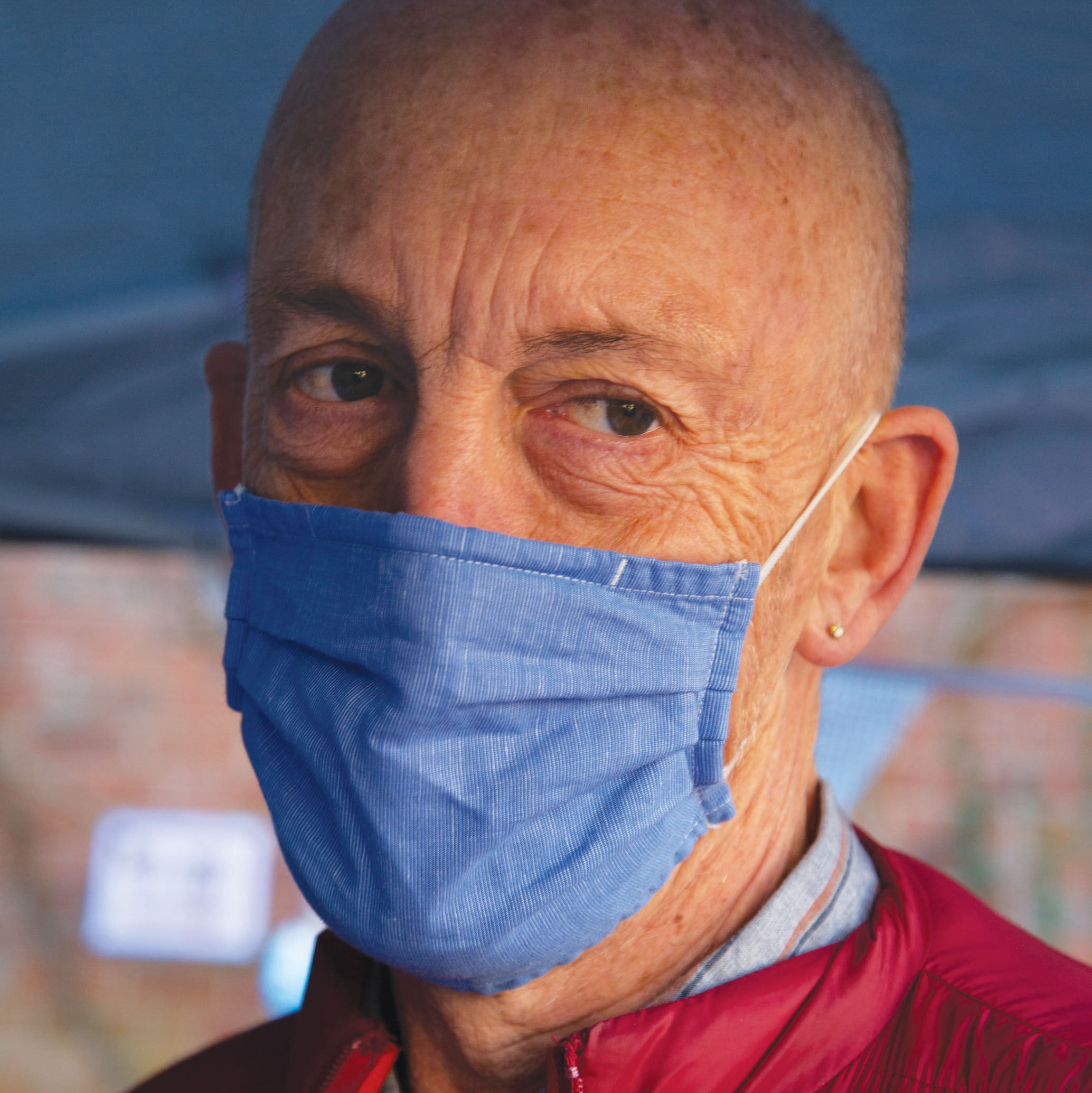Gerard’s Herball or Generall Historie of Plantes: a garden book for the ages
Sometimes on wintry days I turn to my gardening books for inspiration and a sense of what might be possible in Spring. But over the past couple of years my attention has been drawn more often to my copy of Gerard’s Herball or Generall Historie of Plantes. Published in 1597 it is the oldest (and thickest) book that I own. Maggie O’Farrell’s superb novel Hamnet has Agnes consulting it on a regular basis. She was a herbalist and she knew about the healing properties of plants. It is rather wonderful to feel that I can get a book off my shelf that she and no doubt William, consulted. I doubt that it is the actual copy, but who knows?
But it is the connection with another William that has particularly intrigued me. Wiliam Morris. As a child he had access to the family copy of the Herball and studied it closely. He also tended a little garden of his own and learned the names and shapes of plants with the Herball’s help poring over its illustrations. It helped him develop his sense of floral colours, textures, scents, structures, and life cycles and although he was never a garden designer, nor even a great ‘practitioner’ of gardening, he had as Fiona MacCarthy puts it in her comprehensive biography of Morris, ‘a deep appreciation of a garden’s possibilities’. Of course William’s early interest in individual flower forms is not so surprising in the person who became the most floral of designers.
But this grounding in both plants and the Herball became far more important later in life as he embraced dyeing in the mid-1870s. He sent Thomas Wardle a copy of the Herball which he said contained ‘useful information about certain disused vegetable dyes’ as he learned about the techniques of dyeing textiles. Before leaving for Leek in Staffordshire where Wardle and his dyeing works were based, he spent two years preparing, mastering the theory while he carried out inital experiments at Queen Square, the family home at the time. 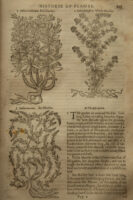 His younger daughter May wrote of this time ‘The air at home was saturated with dyeing: bits of madder and indigo lay about, papers of the kermes insect brought home and its habits and customs explained; dyestuffs of the home country would be inquired.’ Gerards Herball would be read out of an evening to the family, and the two girls, Jenny and May, in their early teens at the time, were given their own sets of dyestuffs. Morris himself was paying extended visits to the Staffordshire works from early 1876, keen to learn the trade. Suzanne Cooper (in How we might live: at home with Jane and William Morris, a delightful new perspective on the Morris’s lives) characterised it as a typically Morrisian activity ”He was keen to get his hands dirty. His eagerness to plunge into the dye vat was almost performative – as if he wanted to prove his worth to the working men who watched him.” Blue to the elbow in smock and clogs. He told Georgie Burne-Jones that he was ‘taking in dyeing at every pore (otherwise by the skin of my hands, which is certain). You know I like that.’ MacCarthy reckons that ‘Blue has a special place in Morris’s colour spectrum. In his poems and his novels it is the sign of happiness, of holidays. Blue was the colour of his working shirts.’
His younger daughter May wrote of this time ‘The air at home was saturated with dyeing: bits of madder and indigo lay about, papers of the kermes insect brought home and its habits and customs explained; dyestuffs of the home country would be inquired.’ Gerards Herball would be read out of an evening to the family, and the two girls, Jenny and May, in their early teens at the time, were given their own sets of dyestuffs. Morris himself was paying extended visits to the Staffordshire works from early 1876, keen to learn the trade. Suzanne Cooper (in How we might live: at home with Jane and William Morris, a delightful new perspective on the Morris’s lives) characterised it as a typically Morrisian activity ”He was keen to get his hands dirty. His eagerness to plunge into the dye vat was almost performative – as if he wanted to prove his worth to the working men who watched him.” Blue to the elbow in smock and clogs. He told Georgie Burne-Jones that he was ‘taking in dyeing at every pore (otherwise by the skin of my hands, which is certain). You know I like that.’ MacCarthy reckons that ‘Blue has a special place in Morris’s colour spectrum. In his poems and his novels it is the sign of happiness, of holidays. Blue was the colour of his working shirts.’
As Cooper remarks it was ‘a time of great inventiveness’. 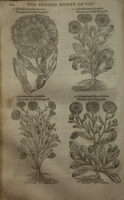 In April 1876 he registered three new textile designs Tulip, Marigold and Larkspur. At the same time Wardle was making trial prints for Columbine a block-printed cotton in muted green and salmon pink. All four patterns demonstrated the skills that William had learned in designing wallpaper, based on the interplay between flowers and foliage.
In April 1876 he registered three new textile designs Tulip, Marigold and Larkspur. At the same time Wardle was making trial prints for Columbine a block-printed cotton in muted green and salmon pink. All four patterns demonstrated the skills that William had learned in designing wallpaper, based on the interplay between flowers and foliage. 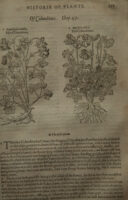 John Gerard’s Herball was hugely popular when it was first published, and an extended and revised edition (rather more botanically accurate than the first) was published in the 1630s. Its influence over the centuries has been significant. And for me it has become something I treasure, for its wisdom, the glory of its illustrations, and for the connections it has with geniuses that I admire.
John Gerard’s Herball was hugely popular when it was first published, and an extended and revised edition (rather more botanically accurate than the first) was published in the 1630s. Its influence over the centuries has been significant. And for me it has become something I treasure, for its wisdom, the glory of its illustrations, and for the connections it has with geniuses that I admire.
